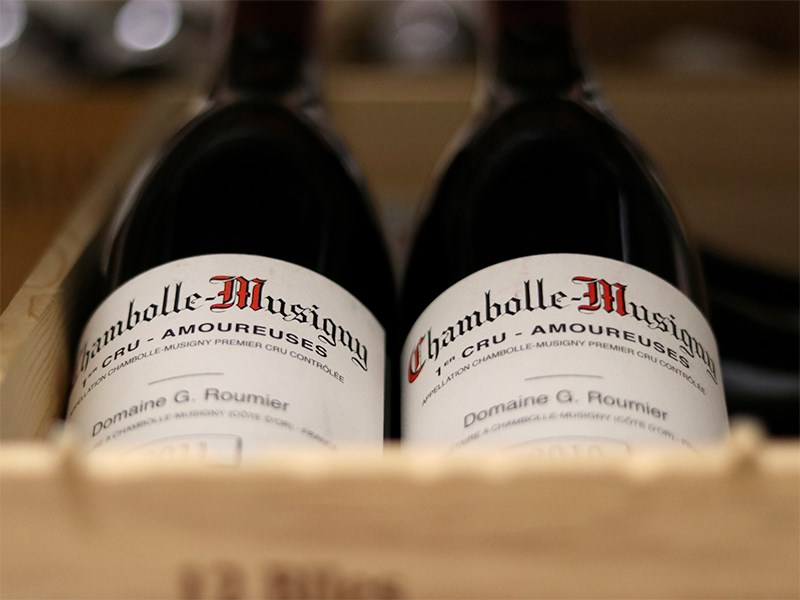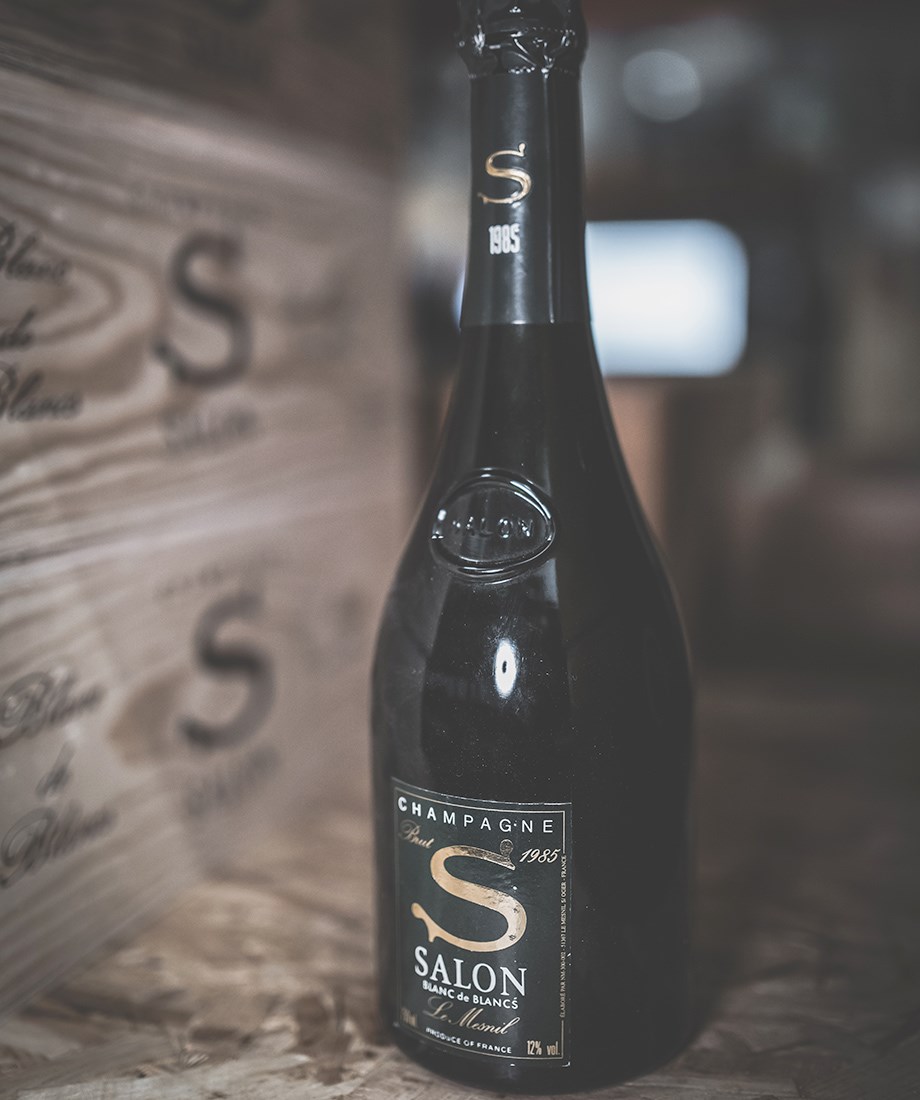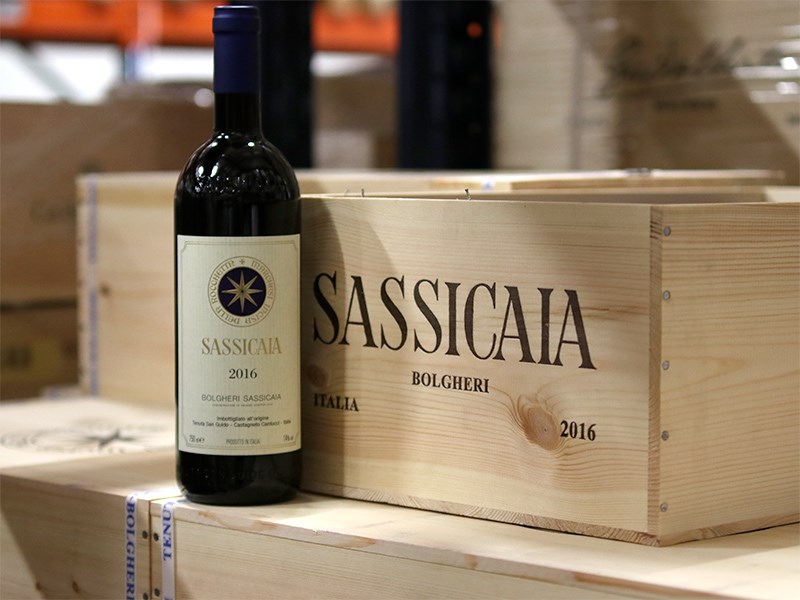Market Analysis - 1. February 2020
Q4 2019: Wine Provides Stability And Security In The Tumultuous World
After a quarter affected by major external circumstances, it's time to do status of the fourth quarter of 2019 while looking up and looking ahead
Q4 2019: The World Seen Through The Glasses Of A Wine Investor
The past quarter once again demanded the wine investor to deal with global political gambling and other turmoil that in the short term has led to temporary fluctuations in wine prices, which, together with exchange rate fluctuations, may affect the reported quarter-to-quarter returns - more about that later on.
The big headline of Q4 may well be "status quo" for wine prices, which despite uncertainty and turmoil still close the year with minor, yet positive returns - for the 11th consecutive year by the way.
But what really affected the wine market in Q4 2019?
The fourth quarter was just a few days old when US President Trump imposed a 25% penalty on, among other things, French, Spanish and English wine with an alcohol percentage of less than 14%. Champagne and Italian wine were spared this time.
The penalty was taken into effect force in mid-October and was followed up by threats of another 100% penalty. The last part, however, turned into nothing in 2019, but the threat was still real as 2019 turned into 2020.
At the same time, the unrest in Hong Kong continued due to uncertainty about the city's future. As we have previously described, Hong Kong is the wine trading center of Southeast Asia as well as the gate-way to China, which is why sales to China have been hit twice, as China's economy and general optimism have also been adversely affected by the ongoing trade war with the United States.
In the wake of a record year in 2018, and with the unstable political world view in mind, 2019, with a small but solid return, has been a convenient demonstration of wine investment's resilience to outside negative influences.
The Impact Of The Pound
The British pound has also been a factor in Q4 and has been affected by the uncertainty and lack of clarity regarding the impending Brexit - a clarification we now have.
These fluctuations affect the RWI index, which aims to measure price trends in the wine market and is the closest we can come to a benchmark, which is suitable for reporting price development on the wines recommended by Rare Wine Invest.
The RWI index is an index composed of four different indices from the British wine exchange, Liv-ex. Liv-ex, the world's largest wine exchange, is based in London and since most of the trades are in British pounds, the data for the RWI index is also delivered in British pounds. Thus, the conversion from pound to euro, which is the currency in which Rare Wine Invest operates, can, in situations where the pound is strengthened or weakened, provide data that indicates either lower or higher returns than it actually is.
Exchange rate fluctuations on the British pound, which rose 4.9% (+6.4% in 2019) compared to the euro and the Danish crown in Q4 2019 are taken into account and the data is interpreted accordingly.
Returns 2019
| Category | Q1 | Q2 | Q3 | Q4 | 2019 |
|---|---|---|---|---|---|
| Bordeaux | 3,50% | -3,30% | 0,70% | 2,60% | 3,40% |
| Burgundy | -1,50% | -4,40% | 5,20% | -1,90% | -2,90% |
| Champagne | 5,50% | -4,40% | 3,10% | 4,70% | 8,90% |
| Rest of World | 2,00% | -3,60% | 2,40% | 3,20% | 3,90% |
| RWI-Index* | 1,80% | -4,10% | 3,50% | 1,50% | 2,60% |
| Stocks** | 12,80% | 3,00% | 2,60% | 5,70% | 26,00% |
The Second Greatest Producers Wave The Flag In Burgundy
On top of a record year in the wine world in 2018, with a return of + 14.5%, especially driven by Burgundy with a return of 33.1%, this particular region has taken a breather - well deserved some would say. Liv-ex reports a fall in prices of 1.9% in the fourth quarter and 2.9% for the year, while we observe both declines and increases that are roughly equalizing one another.
In this calculation, it is by far the greatest wines as well as the wines of the 2015 and 2016 vintages, which continue to be available in relatively large volume, which pulls down. On the other hand, we see a number of smaller top manufacturers raising the flag and pulling up.
The absolute top producers experienced unusual price corrections in Q4 and in particular, the 2015 and 2016 vintage, which continued to be present in the market in large volume, relative to the extent of the productions.
The reason for this can be attributed to the fact that the price sensitivity among the absolute largest and most exclusive wines is currently slightly higher than usual, due to the fact that precisely the quantities available in the market in Q4 have been slightly larger than you have been used to.
Despite the above mentioned, Domaine Leroy has delivered price increases for yet another quarter, while smaller top producers such as Domaine Roumier and Domaine Emmanuel Rouget also delivered success stories with price increases of a few percent.
Is the development in Q4 thus an indication that caution should be taken when it comes to Burgundy's absolute top producers? We believe that the potential of these producers is unchanged and otherwise unaffected by the performance of individual quarters. Here we encourage a long-term perspective, as this is where the true potential must be found - whether it is the largest or second largest wines.
Prices of the greatest Burgundy wines have risen sharply in recent years, which may have contributed to wine connoisseurs in the fourth quarter facing an unfamiliar large supply.
Read our latest recommendation of just Domaine Roumier and the greatest Amourouses: Roumier Amoureuses: Solid Returns and Hyper-limited Production
 Domaine Roumier was one of the great stories of Q4 2019
Domaine Roumier was one of the great stories of Q4 2019
2019 Was The Year Of The Secondary Vintages in Champagne
2019 was a true celebration of 2008 releases, and with Salon's long-awaited release of their 2008 vintage in the 4th quarter, we now only lack Krug before all the truly great premium vintage champagne in vintage 2008 is released.
The release of the 2008 Salon, set a whole new standard for how much Salon can cost and helped increase the price of Salon in secondary vintages on magnum bottles. In addition, the other Salon prices took a break on top of three quarters with hefty price increases.
Despite the generally challenging circumstances in the global wine market, Champagne is not pressed in the same way as it is seen in Burgundy. This may have been particularly aided by the exemption from US penalties. In addition, Champagne constitutes only a small proportion of Chinese consumption, which has been weakened by the US trade war.
Another champagne highlight has been Dom Pérignon, where we have observed that older and secondary vintages across a wide ridge rose in price, quite in line with the predictions we made earlier in the year. Thus, the price difference for the secondary and vintage 2008 starts to be minimal. At the same time we are beginning to observe signs that the volumes of vintage 2008 are declining, which is particularly interesting for the investors who invested in this particular champagne.
Year 2008 was also a theme that made headlines in the fourth quarter and while Liv-ex reports a return of 4.7% on champagne in the quarter, we especially see this to be the case in the secondary vintages from, for example, Dom Pérignon, Salon (magnum ) and Bollinger Grande Année (alm. + magnum).
Read more about 2008 Salon: Outstanding Salon presents Monumental Release: Only 8,000 bottles of vintage 2008
 Mature Salon as well as Salon in magnum bottles performed well in Q4 2019. Here you see the 1985 vintage
Mature Salon as well as Salon in magnum bottles performed well in Q4 2019. Here you see the 1985 vintage
Bordeaux: Will there ever be a come-back?
Liv-ex reported increases of 2.6 % in Q4 and 3.4 % for the entire 2019. Although one could be tempted to see this as a potential boom, we urge for insanity.
We continue to be critical of Bordeaux, and despite what may look like a boom, Liv-ex reports a return of just 6.5 % over the past three years, which is in line with the observations we have made in portfolios containing Bordeaux wine. Bordeaux remains a region in which we recommend great caution in investing.
Despite the great tradition of investing in Bordeaux wine and many traditional wine investors continue to maintain the region's investment potential, it is a region whose come-back we are still missing.
Continued Italian Euphoria In Rest of World
Although Italian wine may have been the main attraction of the Rest of World index in the 4th quarter, several important things have happened in terms of whisky as well.
Whisky, which has been a particularly lucrative investment asset with extremely high returns for a number of years, seems to have slowed down in Q4 2019. According to Rare Whisky 101, the world's leading whisky trading platform, the most exclusive whiskys have delivered returns of between -6 % and +2 % , while the broader market, dominated by less exclusive, but still very exclusive, bottles have delivered +13 % . Port Ellen, which we continue to recommend, belongs somewhere in between and has delivered a 4.7 % return in Q4.
While US top wines are delivering lower price increases, Q4 has witnessed an increased interest in Italian top wines from both Tuscany and Piedmont. These further aided in the exemption of increased US tariff. In fact, in the fourth quarter, it emerged that the Liv-ex index, Italy 100, is the best-performing sub-category throughout 2019.
The increased interest in Italian wine is also noted in the secondary vintages of Sassicaia, which in particular have delivered solid price increases during the quarter, probably supported by the excellent 2015 and 2016 vintages, which have set new standards for what Sassicaia can cost.
The category for non-French wines is led by the Italian top wines, where the Super Tuscan Sassicaia is the most interesting asset of the quarter. The absolute biggest whiskys seem to have slowed down - without it becoming the belly splatter that some have feared. However, the broad whisky market shows that whisky remains an interesting investment asset and that the slowdown in the fourth quarter is limited to the most expensive bottles.
Read more about Sassicaia in our latest Italian investment tip:
Upswing From Record Vintages: Invest In The Latest Vintage Of Sassicaia ‘En Primeur’
 The top vintage 2016 from Sassicaia is one of the main drivers of the succes of italian in Q4 2019
The top vintage 2016 from Sassicaia is one of the main drivers of the succes of italian in Q4 2019
Rare Wine Invest’s Opinion
2019 has been a tumultuous year marked by Brexit, trade war, turmoil in Hong Kong and a US penalty tariff on wine in the fourth quarter. The calendar barely showed 2020 before the relief of an imminent end to Brexit was replaced by a threat of a global pandemic. So the new decade continues where the old one left off, and the many challenges, together with the lowest interest rate ever, make it even more difficult to deliver stable positive returns without any significant risk involved.
Wine delivered positive returns for the 11th consecutive year, and seems more than ever, a solid alternative to the classic investments, which again this year face an uncertain future.
If 2020 becomes a year in which challenges are resolved and where new ones do not arise, and if in 2020 we are not hit by an unexpected "black swan", we expect wine to deliver solid returns, but it will be in competition with the classic investments, which in the best years have outperformed wine.
On the other hand, if we face a year of heightened uncertainty or are we hit by a major unforeseen event or crisis that has a negative impact on the global economy, wine investment will have the opportunity to demonstrate its crisis resistance and resilience - just as it did during the financial crisis, where in practice wine was never in real crisis.
In practice, we expect 2020 to be yet another year of positive returns on wine, and thus is in line with the past 16 years, which have averaged an 8.3% return.
After all, wine has kept exactly what it promises, and if you are looking for peace of mind, stability and stable returns with a long perspective, wine is the right investment.
